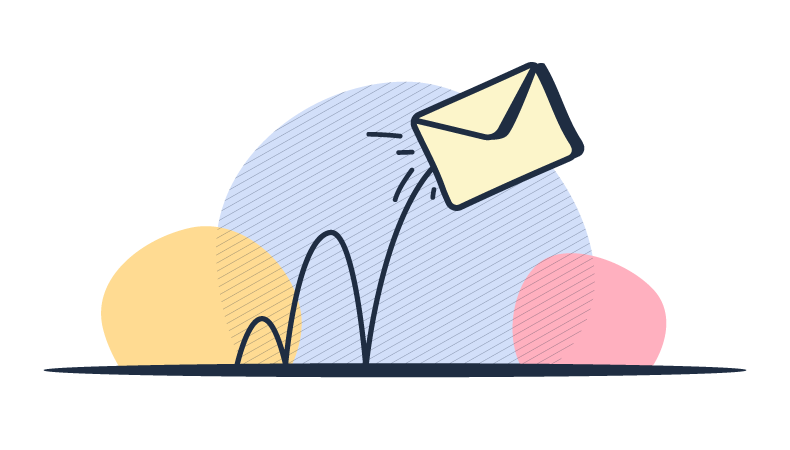In the fast-paced realm of email marketing, every message sent out carries the weight of your brand’s message, hoping to land in a welcoming inbox. But when emails bounce, it's like doors slamming shut on potential connections. Lowering your email bounce rate isn't just about improving numbers—it's about making every email count. Let’s explore how to curb the bounce and ensure your communications not only reach but also resonate with your audience.
Unraveling the Mystery of Bounces
Before diving into solutions, it's vital to understand what a ‘bounce’ really is. Simply put, it's an email that never reaches its intended destination. But why? Is it a mistyped address, an overzealous spam filter, or a recipient's full inbox? The 'why' is crucial, as it dictates the 'how' of our response.
The Two Types of Bounces: Hard and Soft
Bounces come in two flavors:
- Hard Bounces: These are the non-negotiables, the emails that are rejected outright due to invalid addresses or defunct domains.
- Soft Bounces: These are the maybes, where issues like full inboxes or temporary server downtime play a part.
Strategies to Slash the Bounce Rate
Reducing your bounce rate isn't just good practice—it's a strategic imperative. Here’s how you can take control:
1. Cleanse and Purify Your Email List
Regular housekeeping of your email list can work wonders. Scrub out those invalid addresses. Utilize email verification services to ensure that your list is pristine and up-to-date.
2. Personalization is Key
Personalized emails have a higher chance of engagement and a lower chance of bouncing. By tailoring the message to fit the recipient's interests and history with your brand, you're forging a connection that's hard to ignore.
3. Sharpen Your Technical Toolkit
Ensure your email infrastructure is solid. Use protocols like Sender Policy Framework (SPF) and DomainKeys Identified Mail (DKIM) to authenticate your emails. A trusted email is a delivered email.
4. Smart Segmentation
Not all audiences are created equal. Segment your lists based on demographics, behavior, and preferences. This not only targets your messages more effectively but also reduces the likelihood of bounces from disinterested parties.
5. Keep it Relevant and Engaging
Content is king, and relevance is its queen. Your emails must be engaging and provide value to the reader. Irrelevant content is a shortcut to the dreaded 'unsubscribe' button—or worse, the spam folder.
6. Responsive Email Design
With more than half of all emails opened on mobile devices, if your emails aren't mobile-friendly, you're playing with a handicap. Responsive design ensures your emails look good on any screen, reducing the chance of a quick delete.
7. Monitor and Tweak
Use analytics to monitor your email campaign performance. Look at the patterns of bounces and adjust your strategy accordingly. It’s a game of constant improvement.
8. Respect the Unsubscribe
Make it easy for people to unsubscribe. It sounds counterintuitive, but an easy opt-out reduces the chance of your emails being marked as spam, which can affect overall deliverability.
9. Re-engage with Purpose
Craft campaigns aimed at re-engaging those who haven’t interacted with your emails in a while. A well-timed, captivating email can bring a subscriber back from the edge of email oblivion.
The Proactive Path to Inbox Success
Every email sent is a potential customer retained, a sale made, or a relationship strengthened. It's essential to see beyond the metrics and view emails as the valuable touchpoints they are. By proactively curbing the bounce, you are not only ensuring higher deliverability rates but also fostering a more engaged and loyal audience.
Final Note: The Journey from Bounce to Bond
Transforming your email strategy from one that simply broadcasts messages to one that crafts meaningful connections is the journey from bounce to bond. Every email that counts dodges the bounce and lands where it should—opening a dialogue, nurturing a lead, and building the bonds that are the hallmark of successful email marketing.



